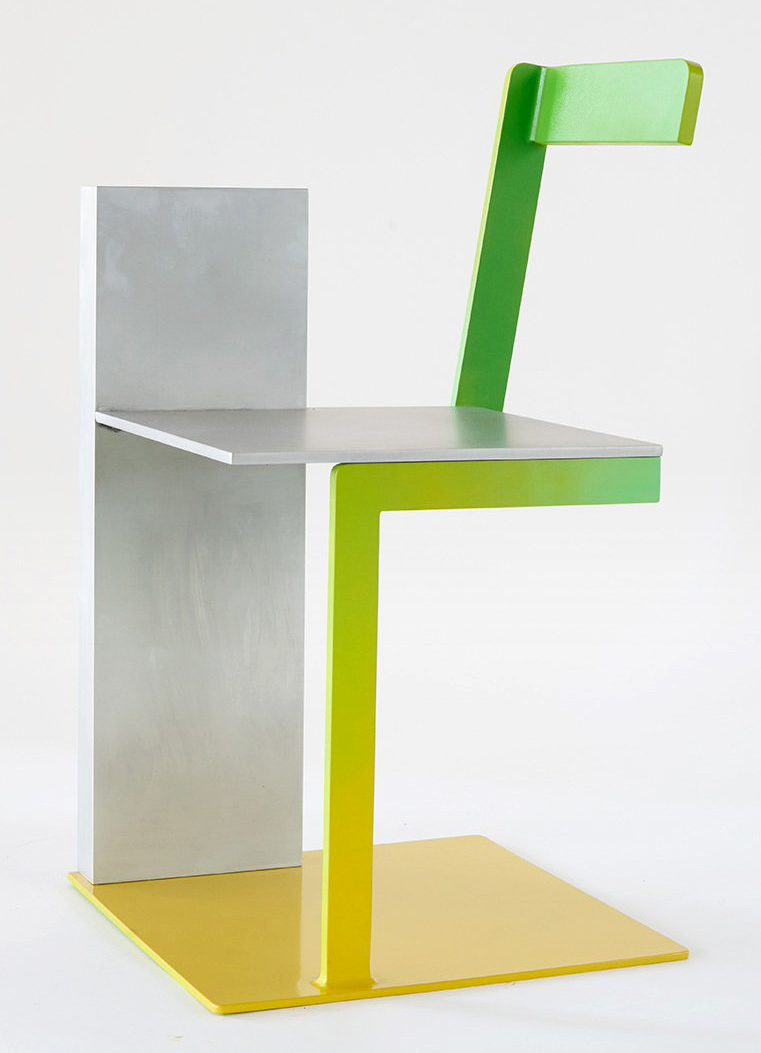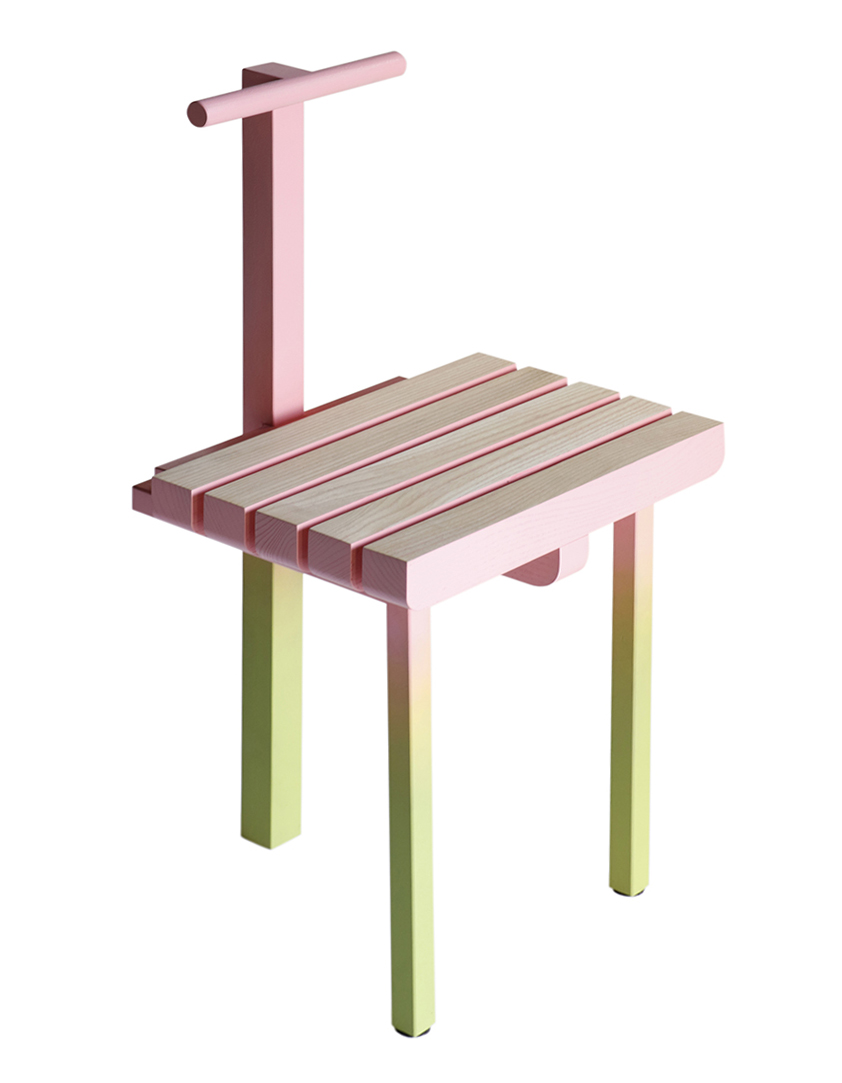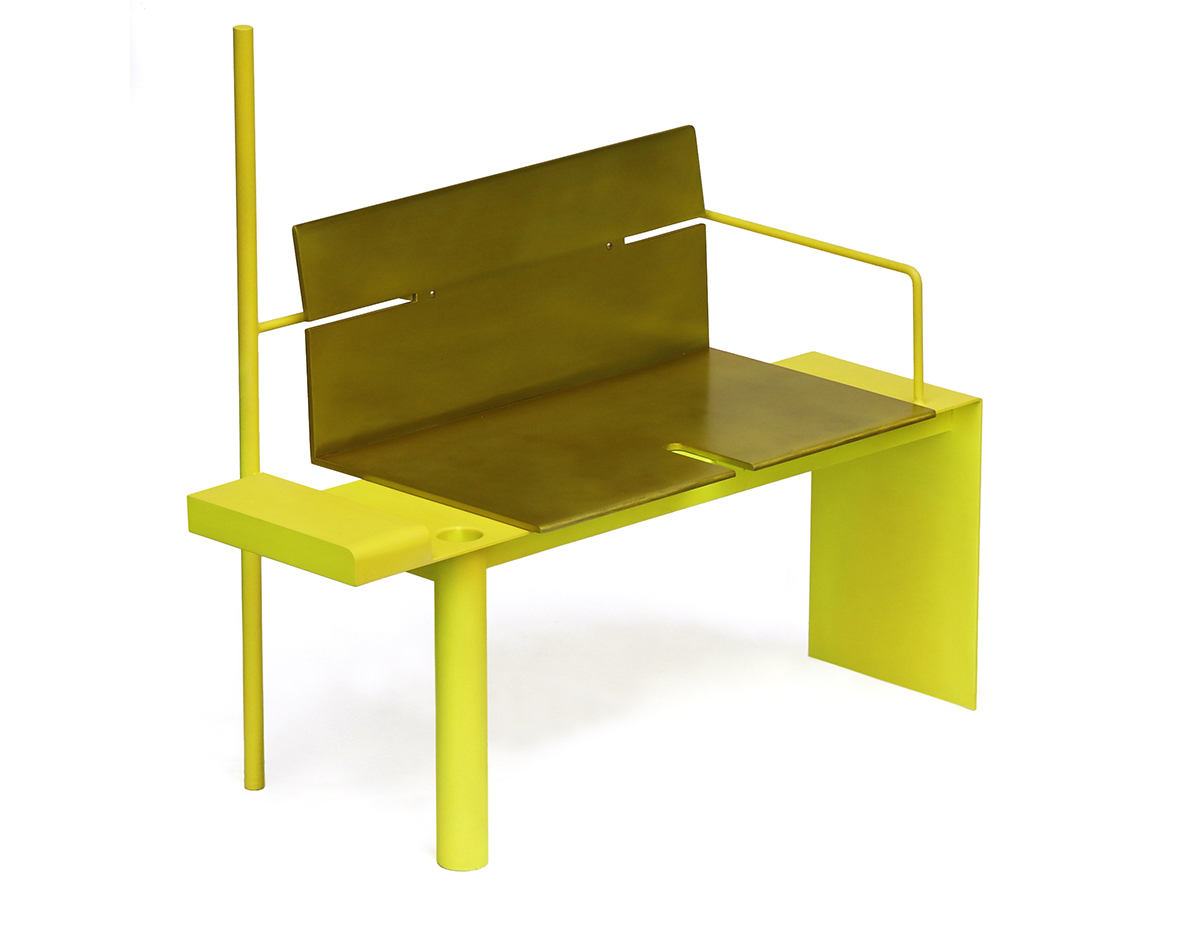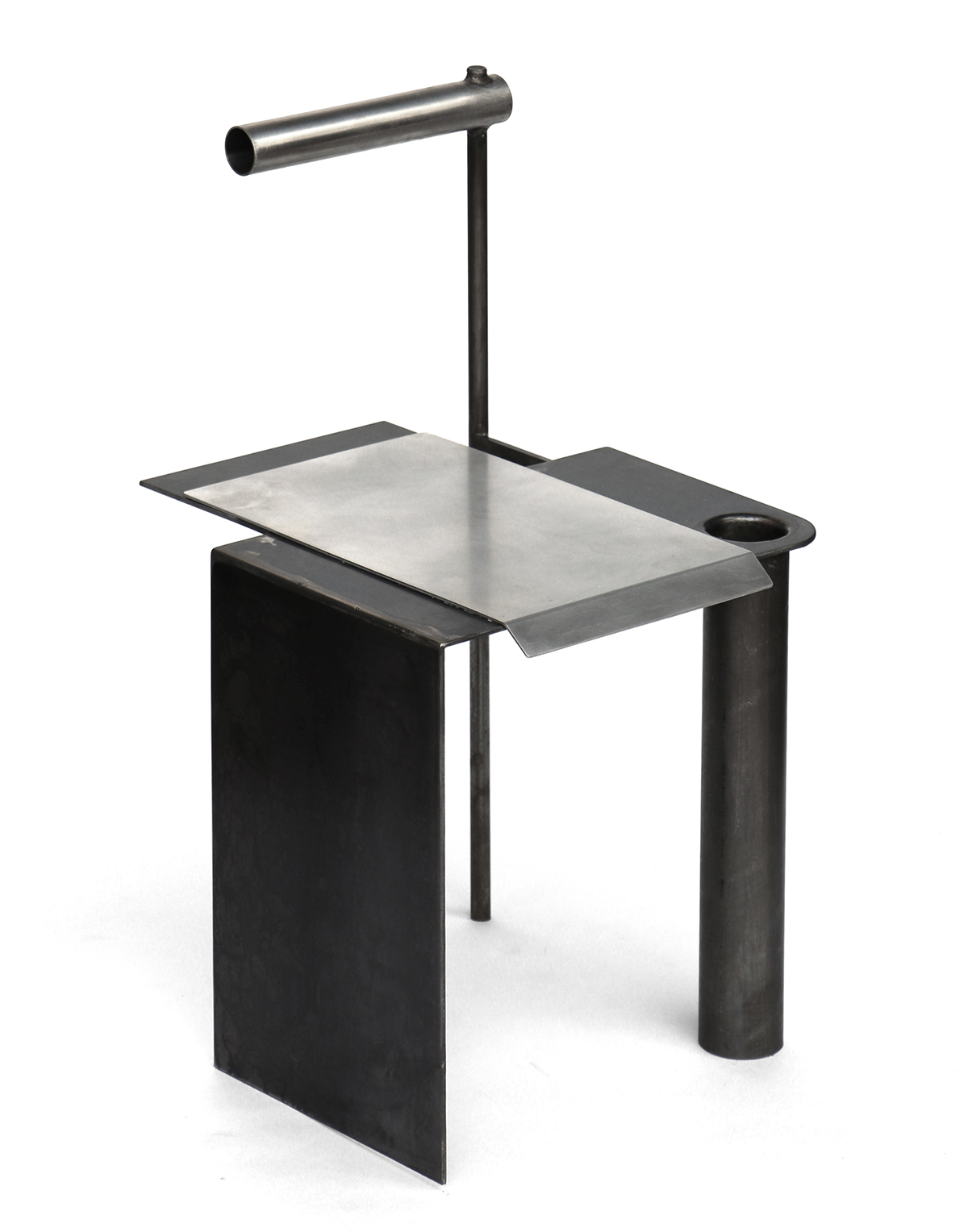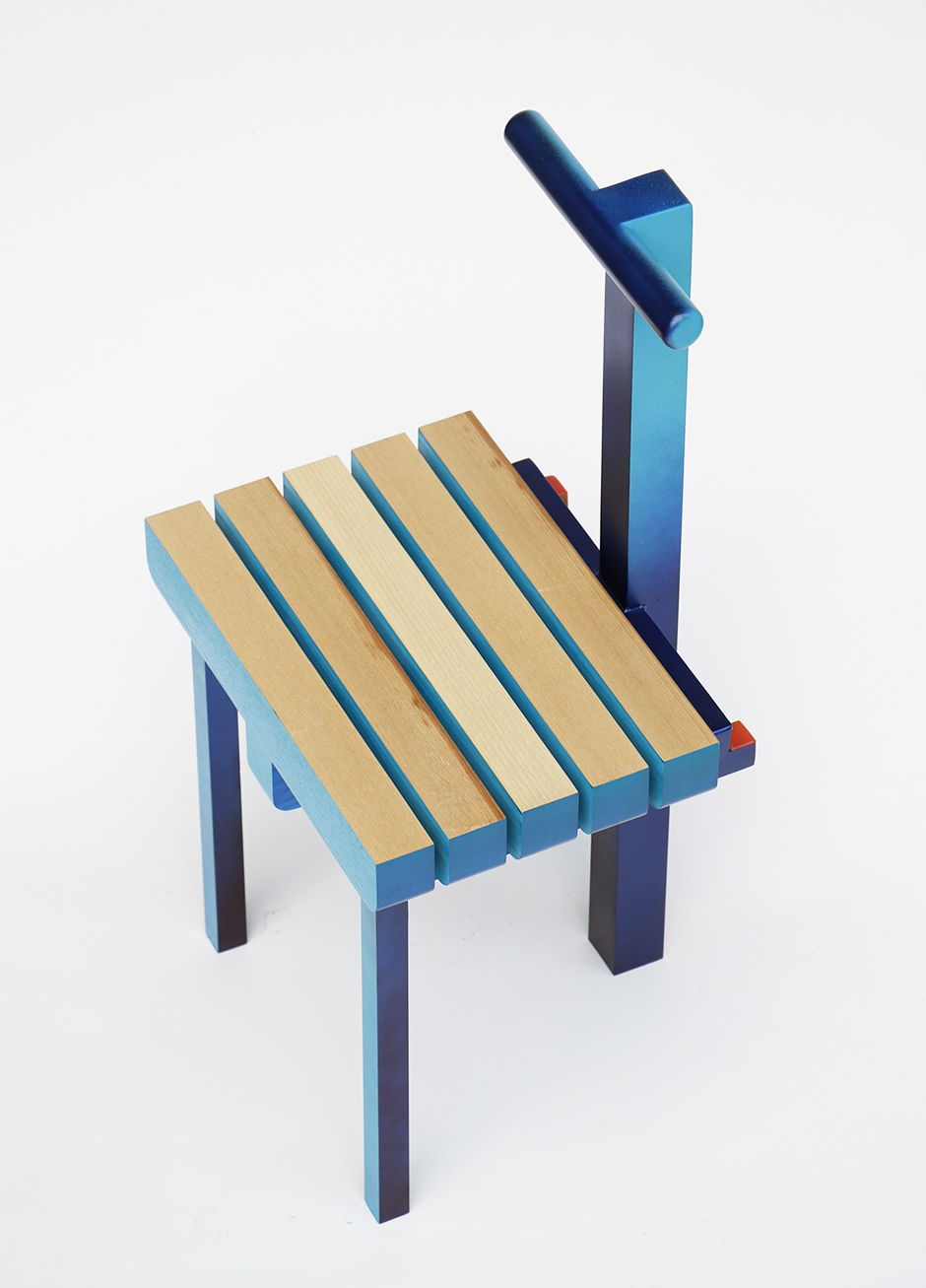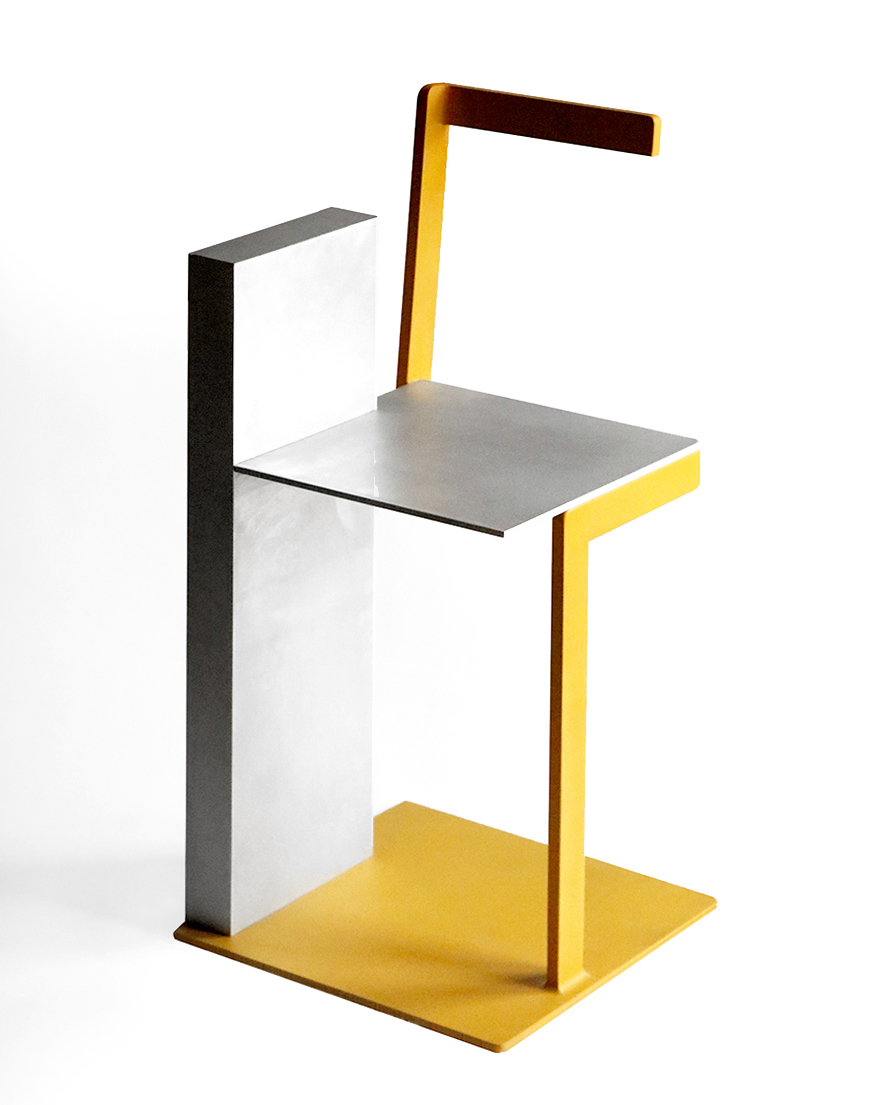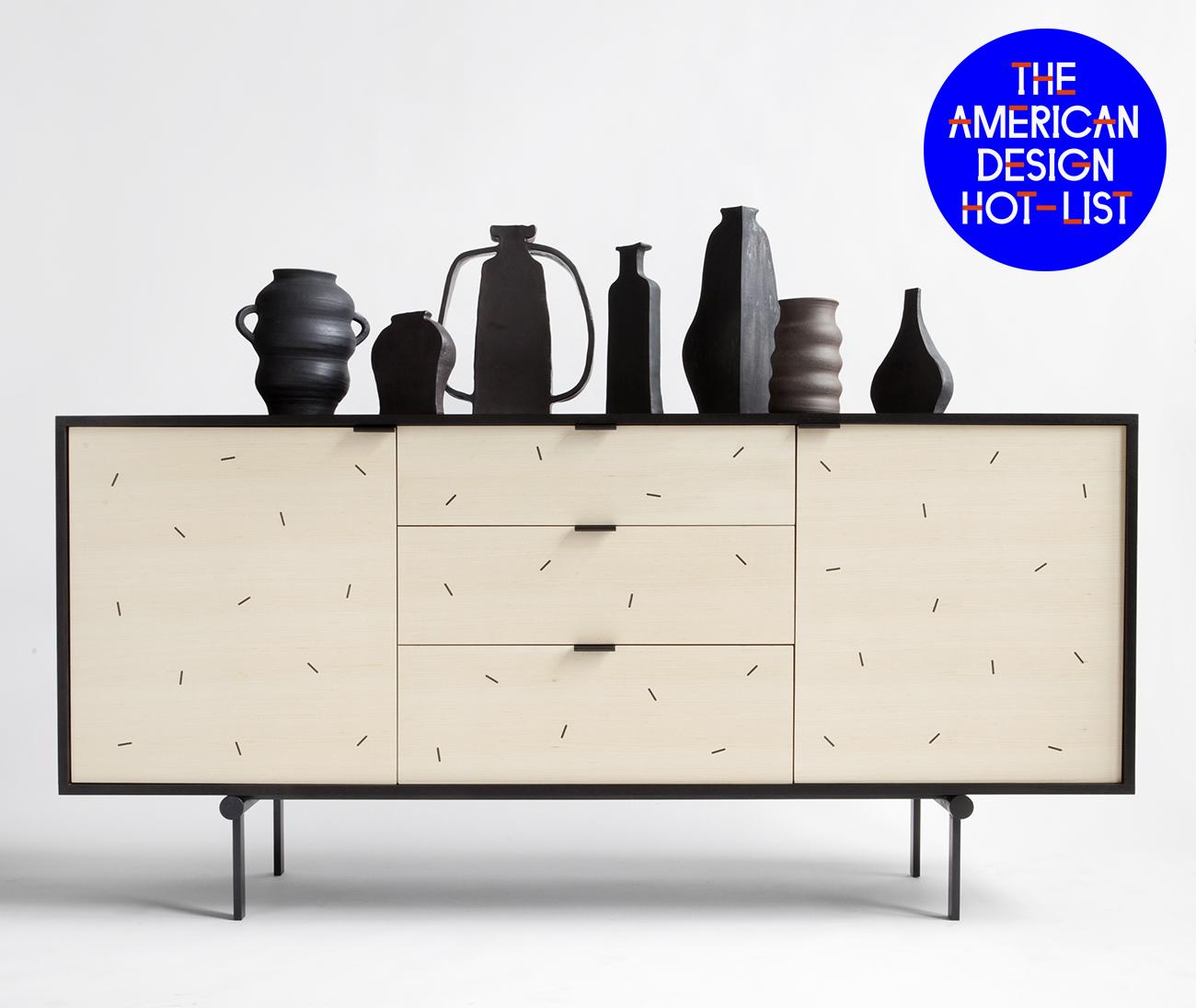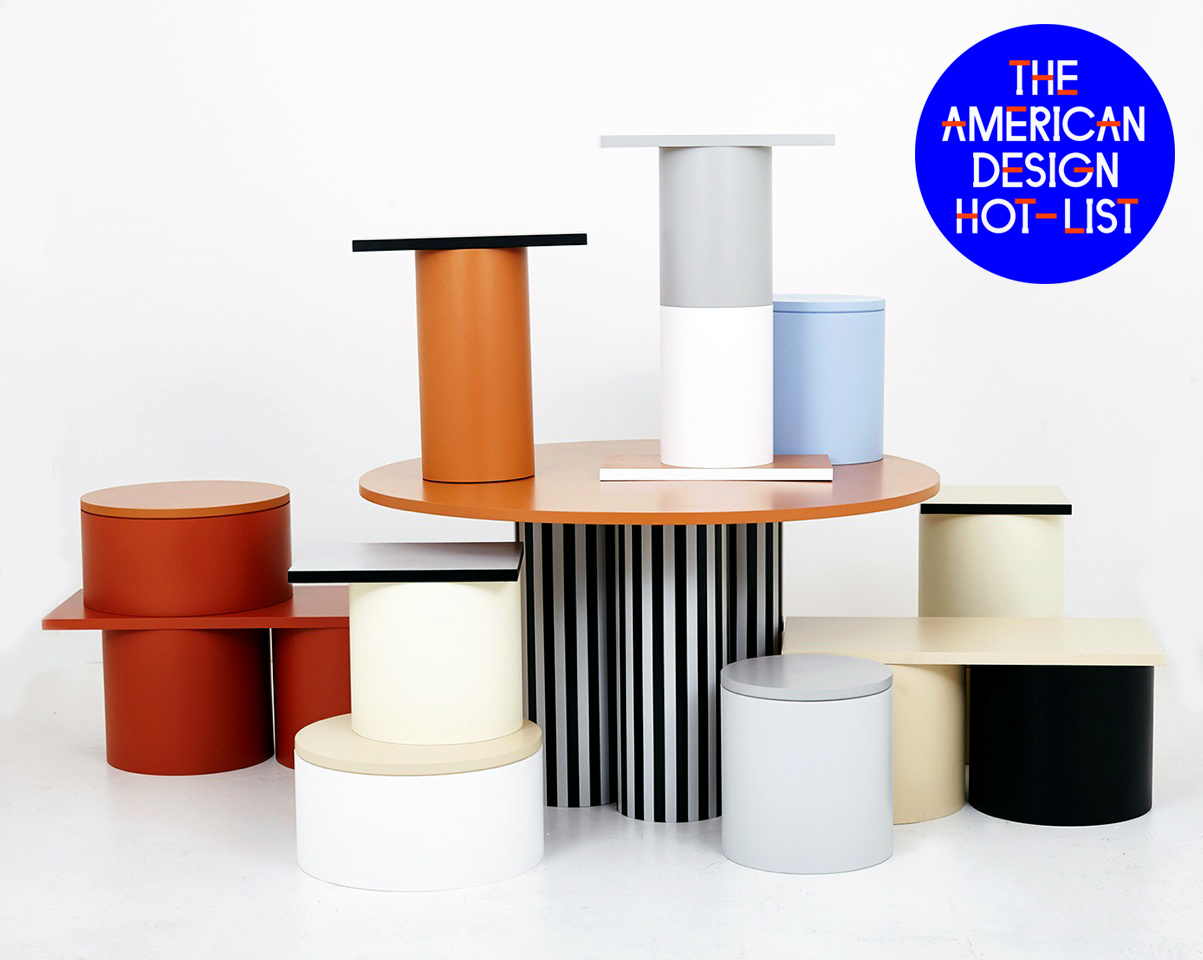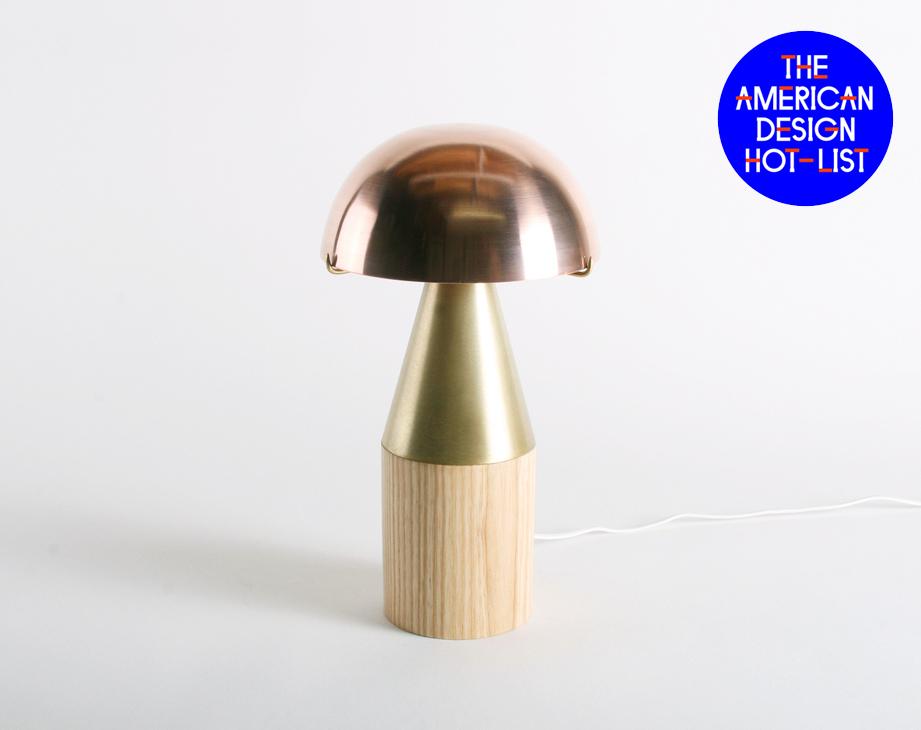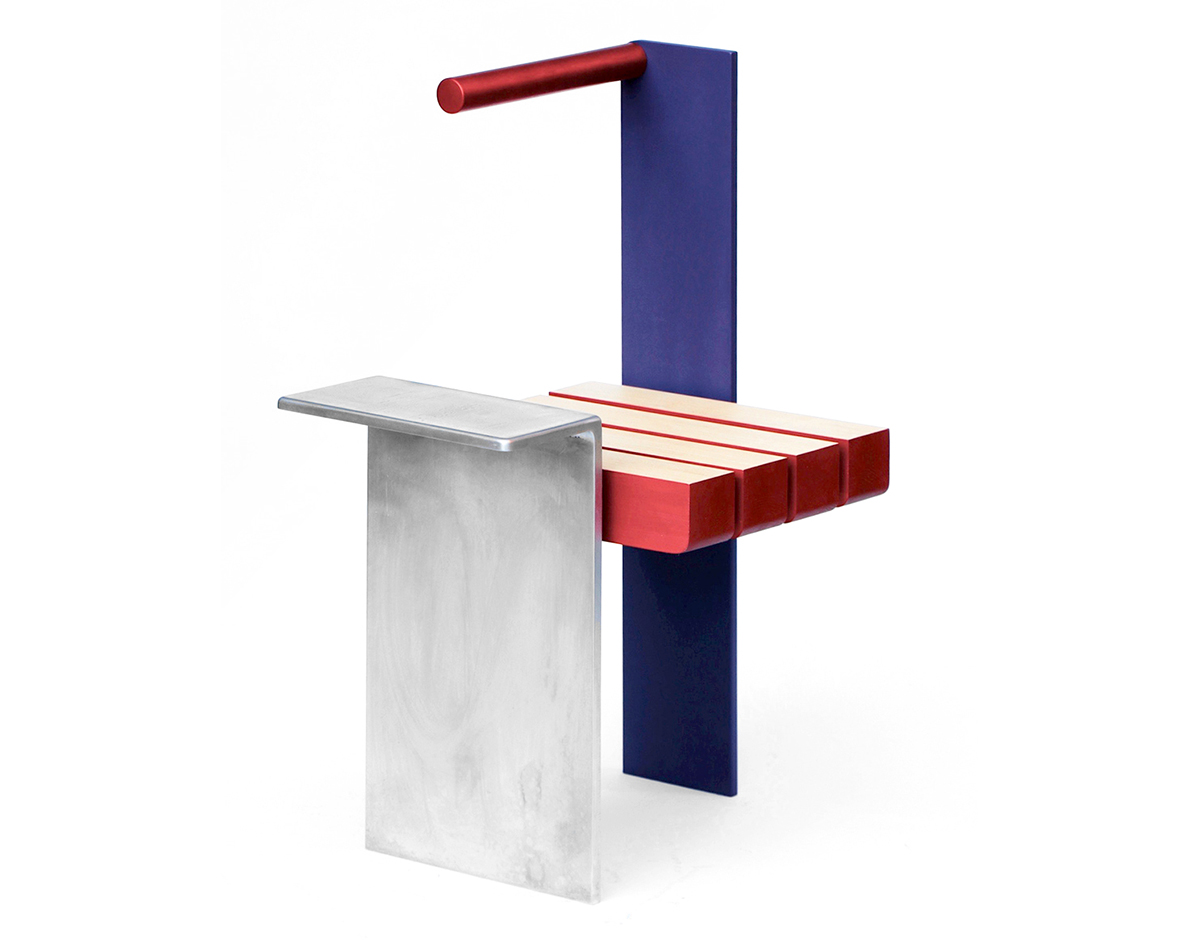
American Design Hot List 2019
Malcolm Majer
Baltimore, malcolmmajer.com
There’s something at once inviting and foreboding about Malcolm Majer’s work. The Baltimore-based designer makes geometric seats in riotous, color-shifting hues from intersecting planes of steel, aluminum, and wood — something like street furniture for the Wonkaverse.
What is American design to you, and what excites you about it?
In considering what’s unique in American design, unfortunately, on a large scale and within a global context we are the developers and exporters of what many love to hate about the built environment. I’d like to believe, however, that the ability to generate environments that are at once tasteless and deeply appealing to humans means American design is uniquely liberated. Personally, this perspective gives me permission to explore forms and concepts without hangups, ditching external value systems. I see this ethos reflected in the work of contemporary American designers I admire and I love it.
What are your plans and highlights for the upcoming year?
This year I’m showing again at the AD Design Show in New York in March, featuring a new body of work and a new approach to showing. Goals for the year are: lighting, a desk, an interior. I’ve been talking to a curator about creating and presenting work that pushes into areas of concept while preserving the forms and level of craft that drives me to make work at all. More shows will likely materialize as the year wears on, but more importantly making a bunch of new work and staying excited are the must-obtain goals for 2020.
What inspires or informs your work in general?
I am inspired by all Modernism that uses rigid geometries. I’m also inspired by Postmodernism, both as a formal language and a conceptual framework. I see my work as postmodern; I like arranging modernist forms irrationally. I run an architectural fabrication business and for years I struggled with what my vision would be and how it would relate to the work people want, trends, “high design,” mass production, and money. I have to admit making things per the designs of architects and various clients according to their wishes and deadlines mostly sucks. There’s gratification at the end, when it’s done (and paid for), but it’s tainted. My furniture work is personal and though occasionally tedious it’s largely driven by my interests and guided through a process I find joyful. I dig in to the craft when I want and I stop when I want.
Thankfully, years of doing architectural work means I move the craft to a pretty good place at least as far as most people can tell. I love seating because it’s complex, it invites intimate interaction, and I was instructed that it’s the hardest type of furniture to create, which hit the competitive nerve that seems to always get to me. The final element is the photography, which allows me to re-envision the work and is in a way the termination of the process for each piece. Photographing the work to see it isometrically and looking unreal with little or no editing is a meaningful part of the whole endeavor, and though the photography is typically meant for external presentation it’s actually something I want aside from it’s value for showing others the work. It’s another personally gratifying moment of creation.
